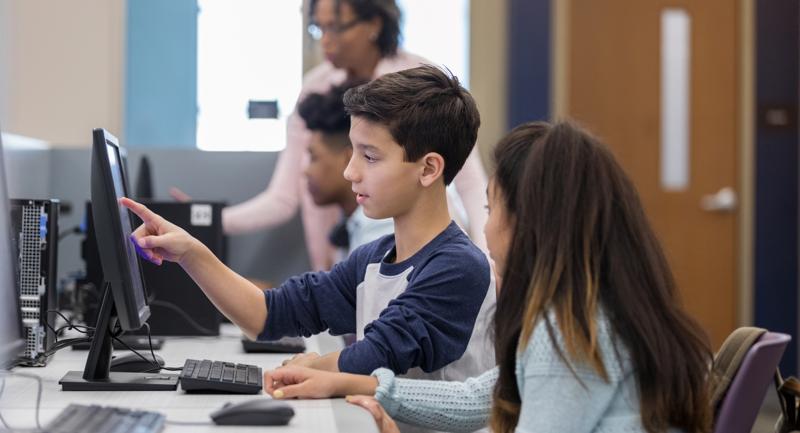When people ask me what I do for a living, and I tell them I'm a teacher, the conversation immediately heads in one of two directions. Either they smile and make a comment about my summers off, or they grimace and wonder aloud how I manage. These responses reveal a great deal about how outsiders view the teaching profession. But there is so much more to the story. It's high time for us to change those perceptions.
"Lucky you—you get summers off!"
Yes, not having to teach in the summer is a bonus. However, many teachers do work in the summer—either they teach summer school or work a seasonal or temporary job to make additional income. So, even though summers off may attract some people to this profession, the pay does not. Most teaching salaries are modest given the teacher's education level and experience on the job.
The best way to increase interest in this field, at least initially, is to pay teachers more. This is not a revolutionary concept. When my students embark on their career exploration projects, the first thing they want to know is "How much money will I make?" I am quick to caution my students not to choose a career solely based on pay. I encourage them to find a job that energizes them and gives them a sense of purpose. However, given the cost of college and the rising cost of living, it is a fair concern.
My students' myopic focus on money reflects the concerns many people have when deciding on a career path. Highly qualified people with a college degree are less likely to pursue a career that is not financially lucrative. If we want the best people in education, then we need to pay them what they are worth. In Northern California, where I teach, there are huge differences in the pay scales of the schools within just a one-hour radius. The schools with the highest pay scales have the most qualified teachers seeking those positions. Once a teacher is hired in those schools, they stay. Schools that pay for quality teachers tend to retain quality teachers.
"I don't know how you manage!"
Pay will attract people to a field, but pay alone will not keep people in the profession. As evidenced by the second comment people make when they find out I am a teacher, the public knows that teaching is not easy. The idea of "managing" a group of 30+ students in a classroom sounds daunting to outsiders. Classroom management is a challenge for many teachers, but the comment, "I don't know how you manage," indicates to me that outsiders think teachers spend all day managing students. But that's not how I spend my day. I work with students. I don't manage them.
I worry that the factory model of students in rows and one-size-fits-all lessons gives outsiders the impression that the goal of teaching is compliance. I don't want my students to be compliant. I want them to be agents in the classroom who make key decisions about their learning. I want them to be curious and creative. If I felt my job was to manage students to ensure they were compliant, I would not be in this profession.
As the reality of the classroom experience shifts from the traditional sit-and-get model most of us grew up with, schools and school leadership need to improve their marketing strategy by shining a light on what the classroom experience is actually like today. An increasing number of classrooms are dynamic spaces where teachers use technology strategically, engage students in real-world problem solving and project-based learning, and create student-centered learning environments. However, this isn't what most people think of when they think about the teaching profession.
Marketing Modern Classrooms
When people grimace and ask how I can manage, I beam and say, "I love teaching." This surprises them. I describe what learning looks like in my classroom—the projects students are working on, the digital portfolios they are creating to share their work with the world, and the myriad ways they challenge me to grow as an educator.
My classroom doesn't have rows. My students walk through the door and create their learning environment based on what they are working on. They arrange the furniture and select the best learning tools for that day's work. They move around the room freely, collaborating with peers, accessing resources, and meeting with me to check in about their progress. Our space isn't the rigid learning environment most people imagine when they think of a secondary classroom. It's inviting and comfortable and designed to foster collaboration and enhance creativity.
Students make key decisions about the projects they work on. I articulate the "why" so students understand the purpose of the project, but they decide what they will focus on, who they will work with, what they will produce, and how they will share that product with an authentic audience. For example, when we studied mental health, students selected different mental health issues they wanted to focus on for their research and then designed their own products. One group focused on anxiety and created a virtual reality experience to allow other people to understand how an anxiety disorder can impact a person's day-to-day experiences. Another group built a life-sized model that lit up to demonstrate the physical impact of stress and anxiety on the body. Yet another group produced a cinematically stunning short film to provide insight into teens struggling with depression.
When I describe the incredible work my students do, people are stunned. Most cannot imagine a classroom environment where students enjoy that level of freedom or produce such high-quality artifacts. They are intrigued. If every person who encountered a teacher heard stories like these, then the current perception of this profession would begin to change.
Changing the Narrative
Changing the narrative about what teaching and learning look like is an important part of attracting creative individuals to this profession. The best teachers are the ones who love to learn. They aggressively pursue their learning and, as a result, are motivated to experiment and more comfortable taking risks. However, creative, motivated, risk-taking individuals won't be attracted to a profession that they see as focused on "managing" students.
Getting teachers into the profession may be an immediate concern, but keeping them in the profession is also crucial. Teachers also need to feel valued, supported, and inspired. Building a strong school community and providing teachers with ongoing professional learning opportunities are key pieces of the larger conversation about how to attract and retain teachers.







